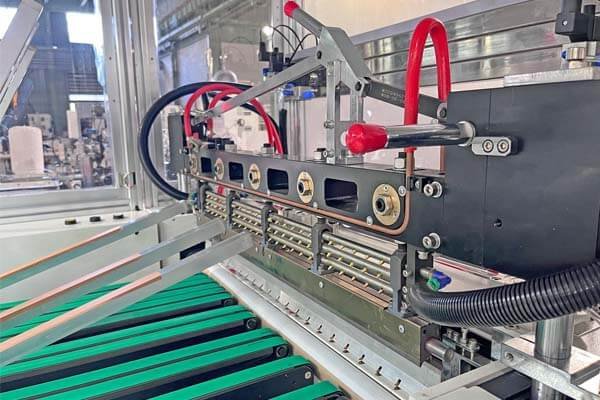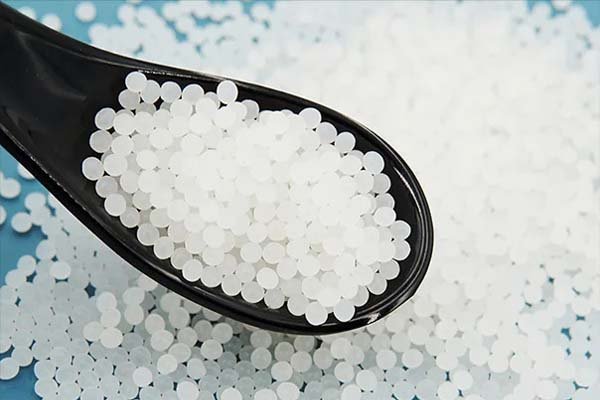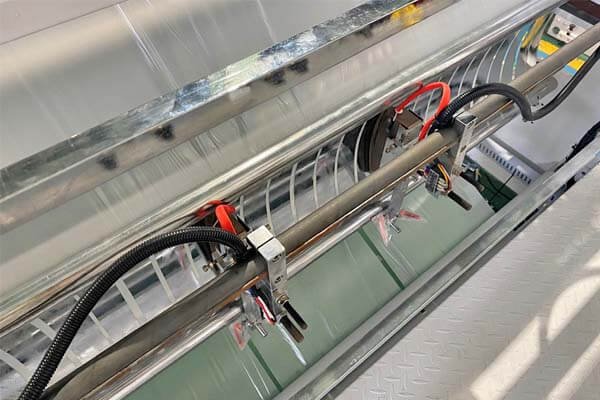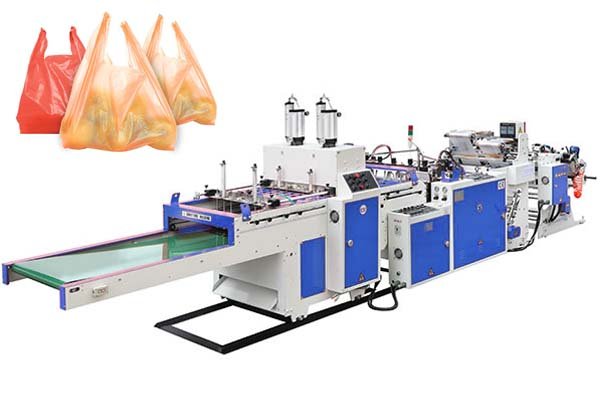
The integrity of courier bags during transit depends heavily on the strength of their seal. Poor sealing can lead to damaged goods, dissatisfied customers, and reputational loss. High-performance courier bag making machines address this by producing strong, tear-resistant, and waterproof seams. These outcomes result from precise regulation of temperature, pressure, and sealing time.
A well-sealed bag serves as the final protective layer for the contents. Companies like BagMec® emphasize this by focusing on three key factors: stable heat, uniform pressure, and controlled cooling. Their machines undergo a 72-hour stress test before delivery to ensure they consistently produce high-quality seals.
What Determines Sealing Quality?
Several features directly influence seal performance. The most critical include:
- Temperature control systems
- Sealing pressure mechanisms
- Quality of the sealing bar
Advanced servo motors and responsive PLC touchscreens also contribute to maintaining consistent results during high-speed production.

Technology Behind Reliable Seals
Producing a strong seal requires integration of precision-engineered components. Key areas include:
Temperature Control Systems
- PID Controllers: These maintain a stable temperature by constantly adjusting based on real-time data.
- Thermocouples: Placed near the sealing bar to measure actual heat at the sealing point.
- ISO 9001 Compliance: Ensures high-quality components that reduce the risk of temperature-related failures.
Sealing Pressure and Dwell Time
- Dwell Time: Duration the sealing jaws apply pressure; controlled down to milliseconds.
- Pressure Systems: Pneumatic systems are standard, but servo-driven options offer higher precision for sensitive materials.
| Feature | Pneumatic System | Servo-Driven System |
|---|---|---|
| Precision | Good for most films | Digitally fine-tuned |
| Consistency | High | Extremely high |
| Energy Consumption | Standard | Lower (more efficient) |
| Best Use Cases | Standard LDPE/HDPE bags | Laminated or high-value packaging |
| Pricing | Included in base models (~$23,000+) | Available in premium configurations |
Sealing Bar Design and Material
- Material: Special aluminum alloy with Teflon coating to prevent sticking.
- Design: Bead seal is common for its strength; flat seals available for specific use cases.
- Durability: High-carbon steel frames maintain alignment over time, reducing sealing defects.
Material Compatibility and Sealing Performance
Different films require different sealing settings. LDPE is easy to seal; HDPE demands more heat and pressure. Compostable materials like PLA require even more precise control.

Matching Machine Settings to Film Types
LDPE and HDPE
- LDPE: Flexible and easy to seal; suitable for high-speed production up to 2,500 bags/hour.
- HDPE: More rigid and durable; requires higher heat and pressure.
PLA and Bioplastics
- Challenges: PLA can stretch, shrink, or become brittle if mishandled.
- Solutions: Features like "Smart Tension Control" and specialized cooling systems prevent distortion and ensure strong seals.
| Film Type | Sealing Temp. | Challenge | BagMec® Solution |
|---|---|---|---|
| LDPE | 120–150 °C | High-speed performance | PID control, servo motors[^3] |
| HDPE | 150–180 °C | Tear resistance at seam | Enhanced sealing bars with greater pressure |
| PLA Film | 110–140 °C | Brittleness, stretching | Tension control, rapid cooling |
| Laminates | Varies | Risk of delamination | Custom heat profiles and servo-driven pressure |
Seal Strength Testing Methods
A seal's appearance isn’t enough. It must pass rigorous mechanical tests:

Testing Techniques
Peel Test (ASTM F88)
- Method: Measures the force needed to pull apart a sealed strip.
- Purpose: Quantifies seam strength to fine-tune machine settings.
Burst Test (ASTM F1140)
- Method: Air is pumped into a sealed bag until it bursts.
- Purpose: Confirms the seal is stronger than the bag material itself.
In-House Durability Tests
- Drop Test: Bags filled with weights are dropped to simulate handling.
- 72-Hour Machine Test: Machines run continuously; bags from different intervals are tested to ensure seal consistency over time.
Pricing Overview
The cost of a courier bag making machine depends on its capabilities.
Typical price range: $23,000–$35,000 USD, based on automation, speed, and features like printers or double-seal systems.
What’s Included at Base Price ($23,000)
- High-strength frame (carbon steel)
- PLC touchscreen
- Precision heat control
- Safety features (CE-compliant)
- Performance suitable for scaling businesses
Common Add-Ons and Pricing
| Feature | Description | Benefit | Price Addition |
|---|---|---|---|
| Servo Motor Upgrade | For main drive | Smoother, faster, more efficient | +$5,000–$7,000 |
| In-line Printing | Adds QR/logo printing | Meets traceability/logistics needs | +$4,000–$6,000 |
| Double Sealing Bar | Adds second seam | Greater strength for high-value goods | +$2,000–$3,500 |
| IoT Connectivity | Remote monitoring and diagnostics | Reduces downtime | +$3,000 |
A fully-featured machine typically approaches $35,000, but efficiency and uptime offer a quick return on investment.
How to Get an Accurate Quote
- Contact: Joshua Wei at info@bagmec.com
- Provide: Film type, output goals, and feature needs
- Response: Detailed pricing within 48 hours
Conclusion
Reliable heat sealing is a result of precise engineering — not luck. It involves stable temperature control, consistent pressure, and durable construction. A well-built courier bag making machine delivers these elements to ensure packaging integrity from start to finish.






